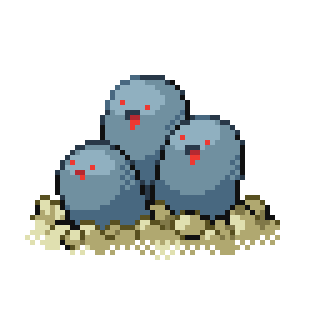I installed a few different distros, landed on Cinnamon Mint. I’m not a tech dummy, but I feel I’m in over my head.
I installed Docker in the terminal (two things I’m not familiar with) but I can’t find it anywhere. Googled some stuff, tried to run stuff, and… I dunno.
I’m TRYING to learn docker so I can set up audiobookshelf and Sonarr with Sabnzbd.
Once it’s installed in the terminal, how the hell do I find docker so I can start playing with it?
Is there a Linux for people who are deeply entrenched in how Windows works? I’m not above googling command lines that I can copy and paste but I’ve spent HOURS trying to figure this out and have gotten no where…
Thanks! Sorry if this is the wrong place for this
EDIT : holy moly. I posted this and went to bed. Didn’t quite realize the hornets nest I was going to kick. THANK YOU to everyone who has and is about to comment. It tells you how much traction I usually get because I usually answer every response on lemmy and the former. For this one I don’t think I’ll be able to do it.
I’ve got a few little ones so time to sit and work on this is tough (thus 5h last night after they were in bed) but I’m going to start picking at all your suggestions (and anyone else who contributes as well)
Thank you so much everyone! I think windows has taught me to be very visually reliant and yelling into the abyss that is the terminal is a whole different beast - but I’m willing to give it a go!
To be fair, you’re taking on a lot of new things at once. You can spin up docker containers on windows too, all while using a UI. I think it’s great your exposing yourself to self hosting, linux, command line interface, and containerization all at once, but don’t beat yourself up for it taking longer than expected. A lot of it takes time. I encourage you to keep trying and playing. Good luck!
Docker is one of the container technologies
Containers vs Images
This is a very simplified explanation, which hopefully clears up for you. As with all simplifications, they aren’t entirely correct.
Containers put processes, files, and networking into a space where they are secluded from the rest. You main OS is called the host and the container is called the guest. You can selectively share resources with the guest. To use an analogy, if you house were the computer with linux, if you took a room, put tools and resources for those tools into it, put workers into it, got them to start working and locked the door, they’d be contained in the room, unable to break out. If you want to give workers access to resources, you either a window, a corridor, or even a door depending on much access you want to give them.
Containers are created from an image. Think of it as the tools, resources, and configuration required every time you create a room in your house for workers to do a job. The woodworkers will need different tools and resources than say metalworkers.
Most images are stored on DockerHub. So when you do
docker pull linuxserver/sonarryou download the image. When you dodocker run linuxserver/sonarryou create a container from an image.Installation
You’re on Cinnamon Mint which is linux distribution derived from another linux distribution called debian. You have to follow the installation instructions. Everything is there. If something doesn’t work, it’s most likely because you skipped a step. The most important ones are the post-installation steps:
- Adding your user to the docker group
- Logging out and back in (or simply restarting)
Those are the most commonly missed steps. I’ve fallen for this trap too!
Local help
To use linux, you need to learn about ways to help yourself or find help. On linux, most well-written programs print a help. Simply running the command without any arguments most often output a help text --> running
dockerdoes so. If they don’t, then the--helpflag often does -->docker --help. The shorthand is-h-->docker -h.Some commands have sub commands e.g
docker run,docker image,docker ps, … . Those subcommands also take flags of which-hand--helpare available.The help output is often not extensive and programs often have a manual. To access it the command is
man-->man findwill output the manual for thefindcommand. Docker doesn’t have a local manual but an online one.For clarification when running a command there are different ways to interpret the text after the command:
Flags/Options
These are named parameters to the command. Some do not take input like
-hand--helpwhich are called flags. Some do like--file /etc/passwdand are often called options.Arguments
These are unnamed parameters and each command interprets them differently.
echo "hello world"-->echois the command and"hello world"is the argument. Some commands can take multiple argumentsRunning containers
Imperatively
As described above
docker run linuxserver/sonarrruns an image in a container. However, it runs in the foreground (as opposed to the background in what is most often called a “daemon”). Starting in the foreground is most likely not how you want to run things as that means if you close your terminal, you end the process too. To run something in the background, you usedocker run --detatch linuxserver/sonarr.You can pass options like
-vor--volumeto make a file or folder from your host system available in the guest e.g-v /path/on/host:/tmp/path/in/guest. Or-p/--portto forward a host port to a guest port e.g-p 8080:80. That means if you access port8080on your host, the traffic will be forwarded to port80in the guest.These are imperatives as in you command the computer to do a specific action. Run that docker image, stop that docker container, restart these containers, start a container with this port forward and that volume with this user …
Declaratively
If you don’t want to keep typing the same commands, you can declare everything about your containers up front. Their volumes, ports, environment variables, which image is used, which network card/interface they have access to, which other network they share with other containers, and so on.
This is done with
docker-composeordocker composefor newer docker versions (not all operating systems have the new docker version).This already a long text, so if you want to know more, the best resource is the docker compose manual and the compose file reference.
Hopefully this helped with the basics and understanding what you’re doing. There are probably great video resources out there that explain it more didactically than I do with steps you can follow along.
Good luck!
Docker is a cli only app, if you want a gui interface check out docker desktop
This is probably what OP wants. A gui
A GUI isn’t going to help, mon capitaine. Start-stop is the easy part, OP will still need to create a docker-compose.yml and a systemd unit.
The OP wants a LLM to walk him through the process and generate all of the relevant files. If they entered 2-3 prompts into gemini/chatgpt they wouldn’t have needed this thread.

The crazy pills are the first step in learning. Embrace the crazy. Take more pills.
Which pills would you recommend?
Estrogen? It works for my girlfriend and her Linux shenanigans!
Damn, I’ll have to try it out!
podman is better but thats just my opinion btw





